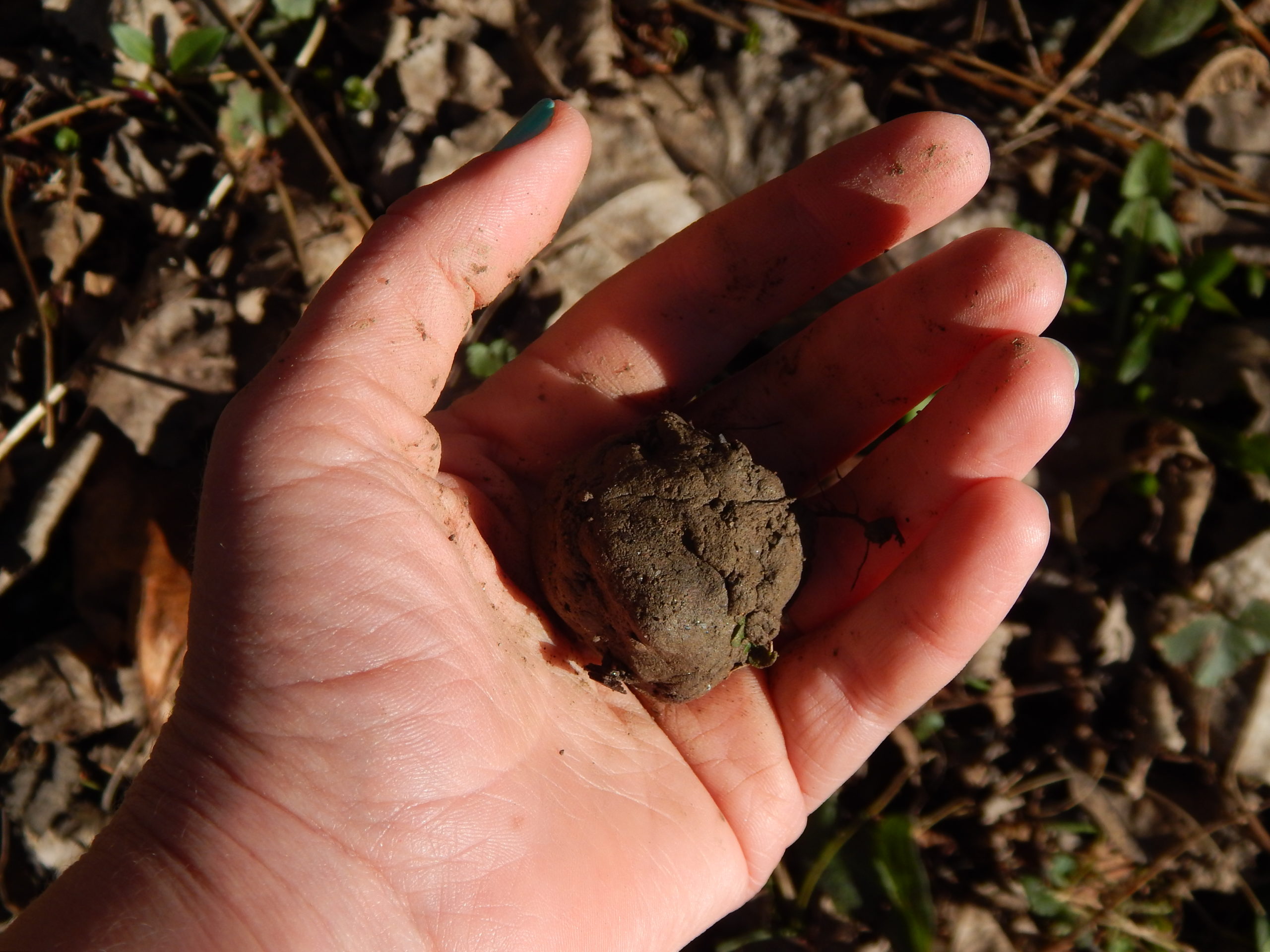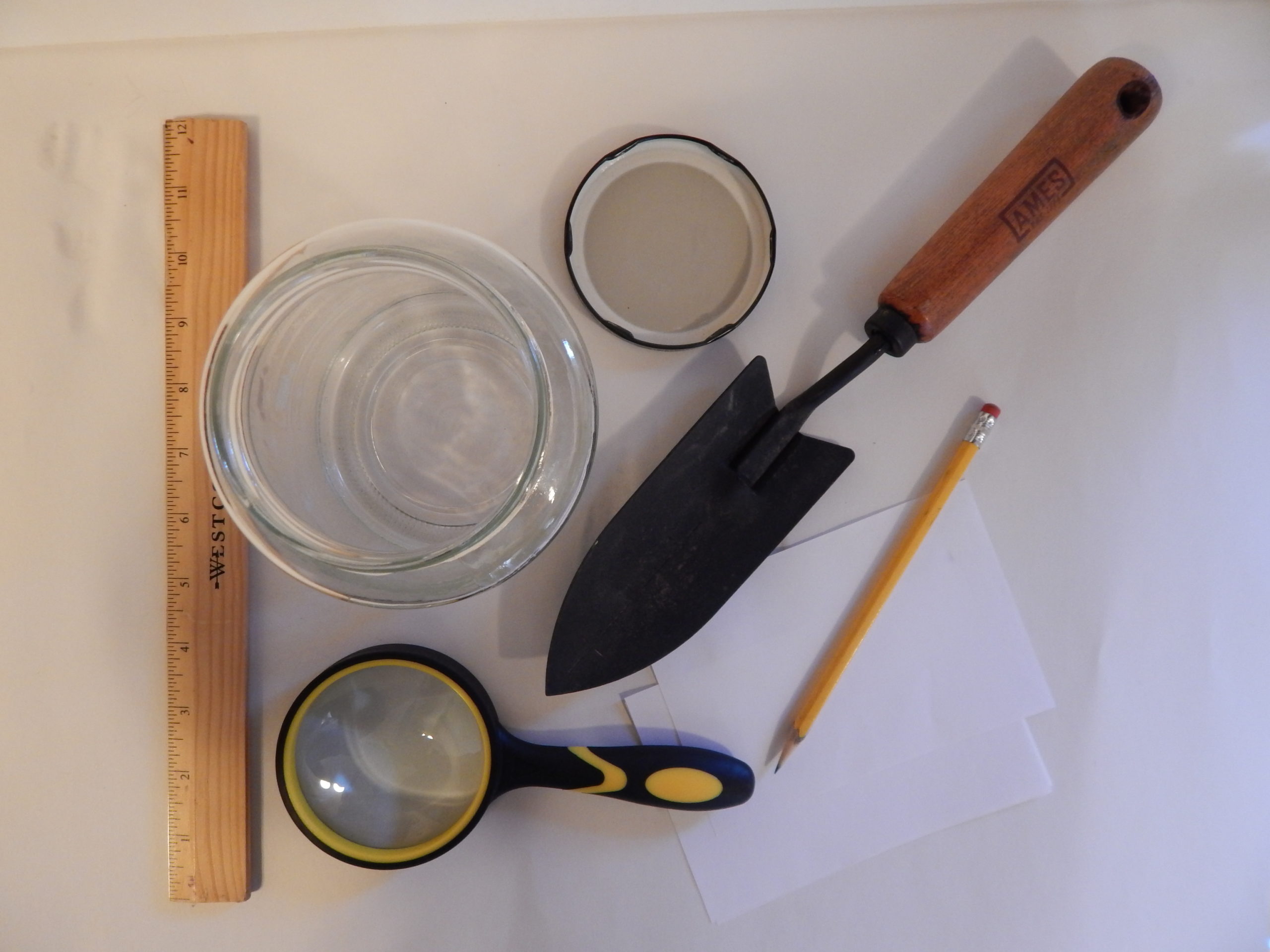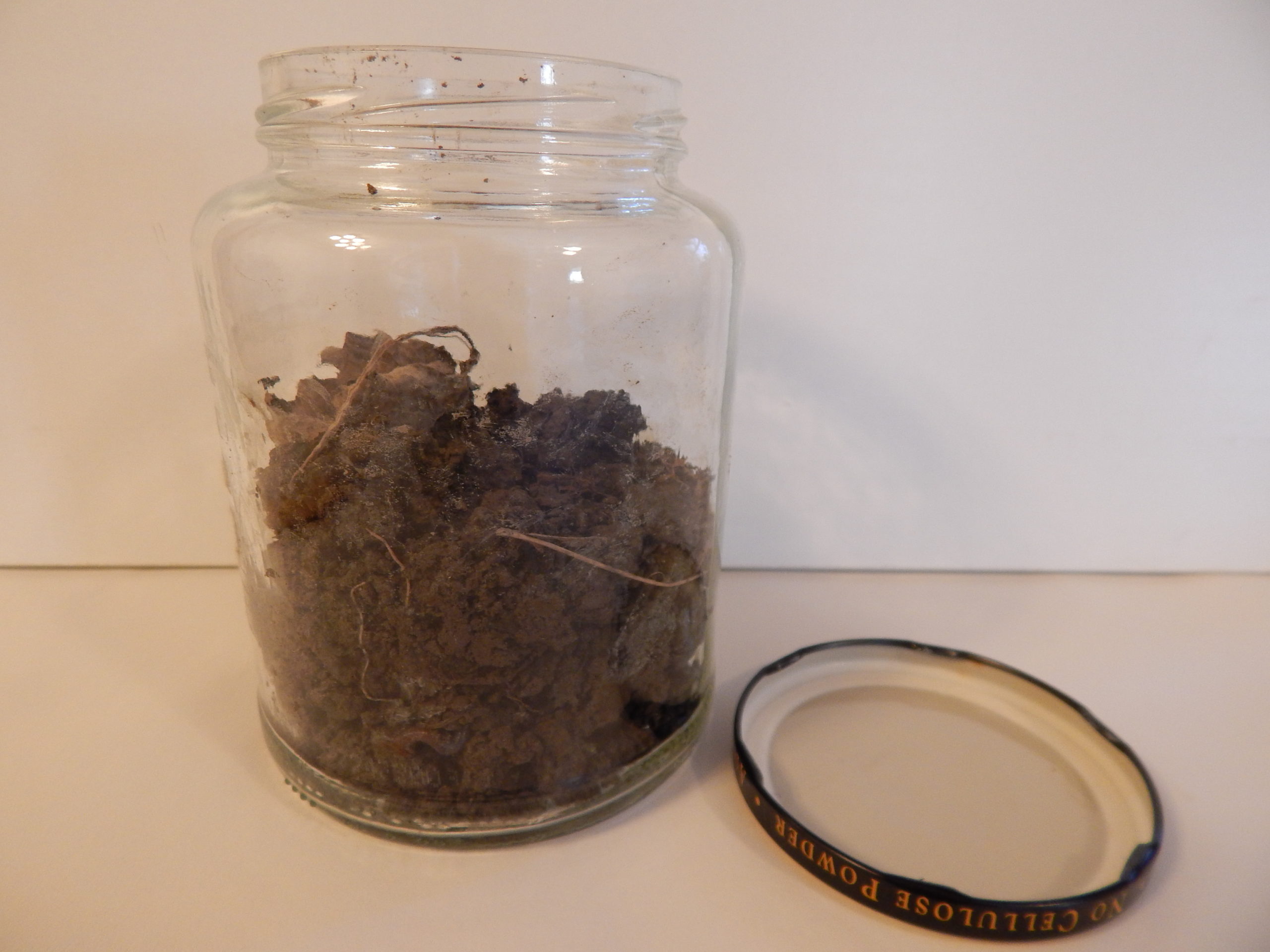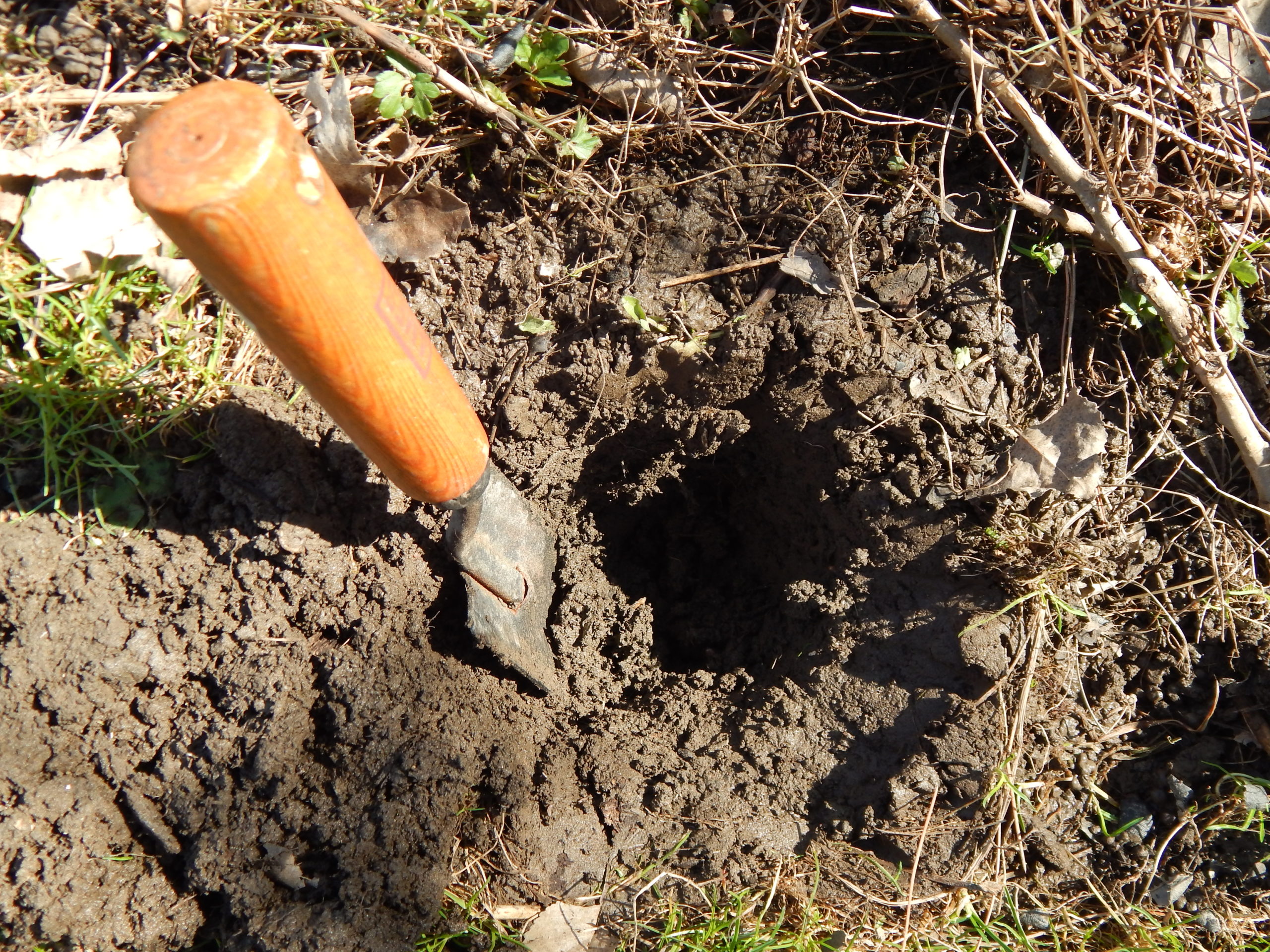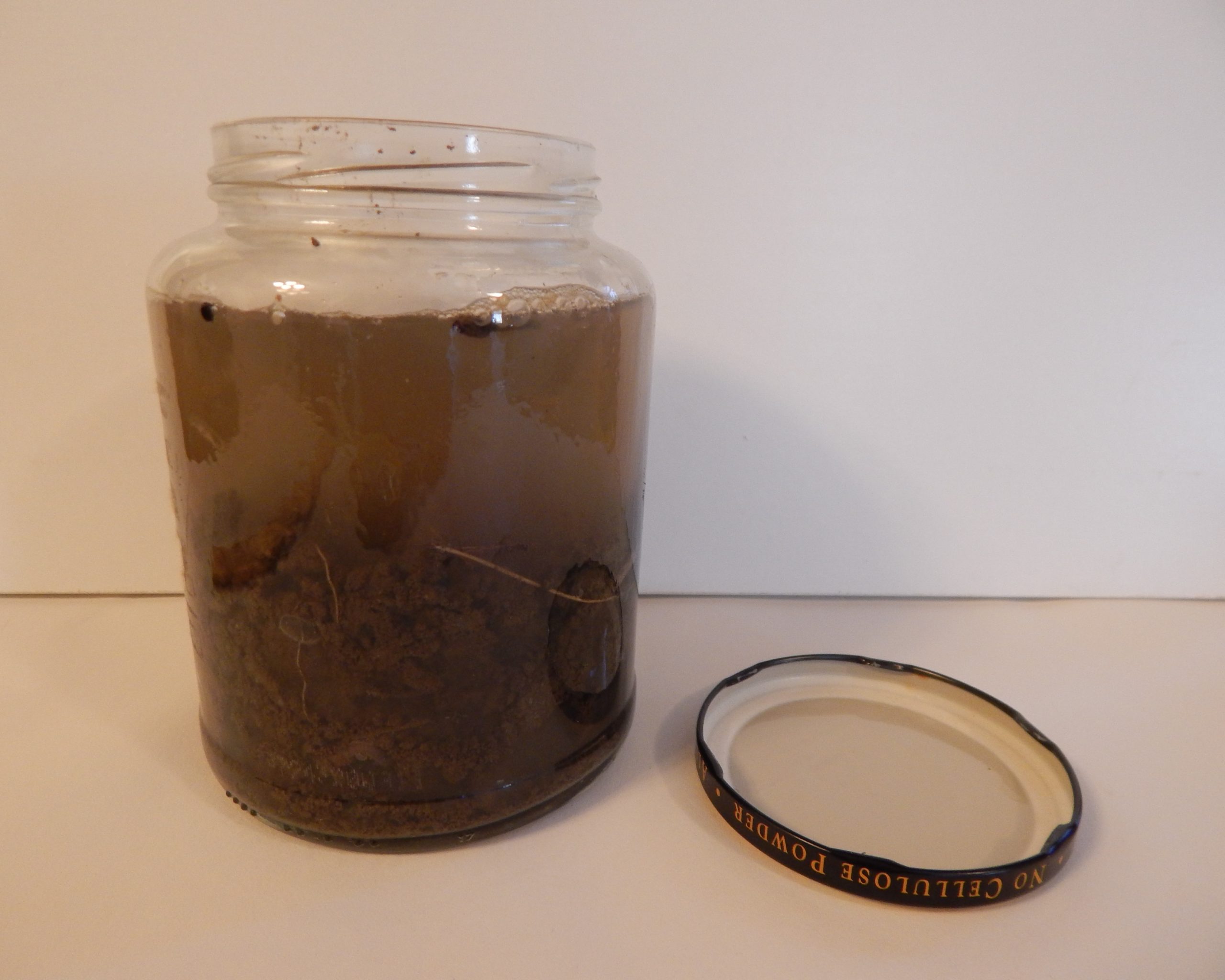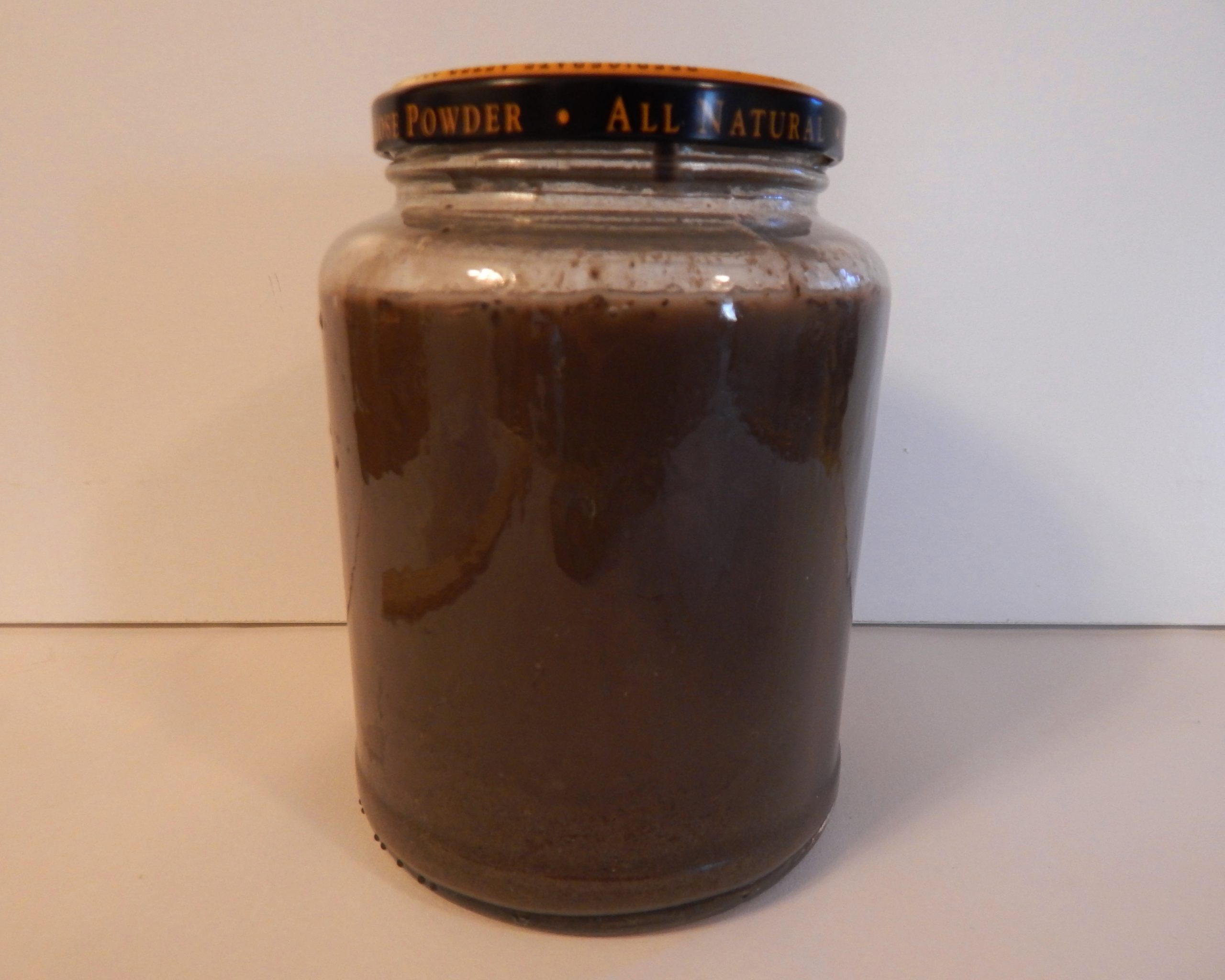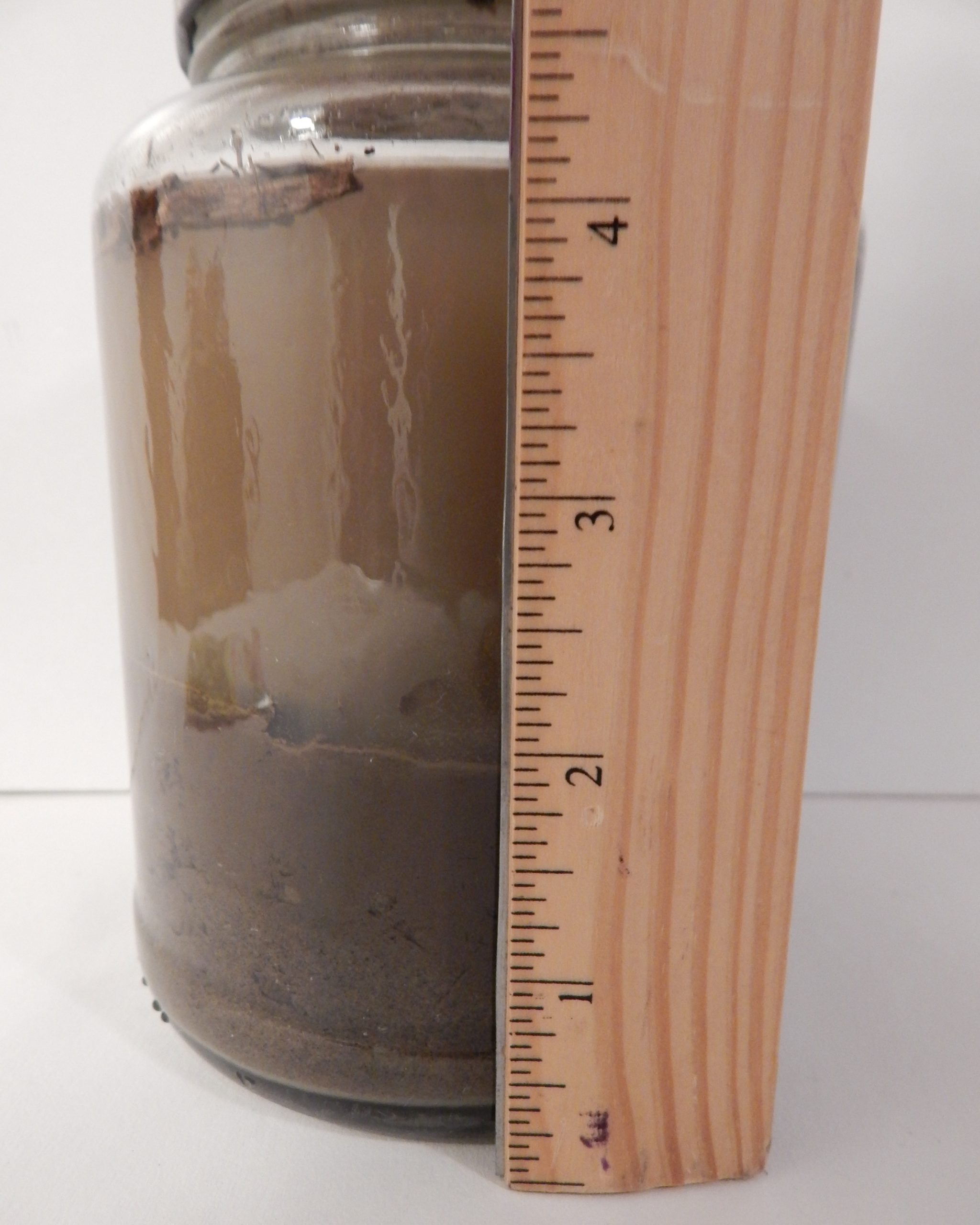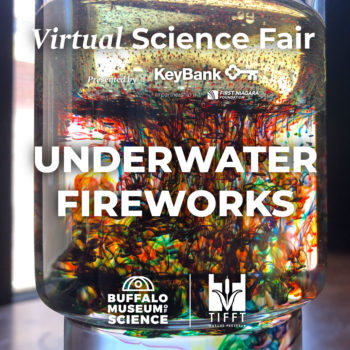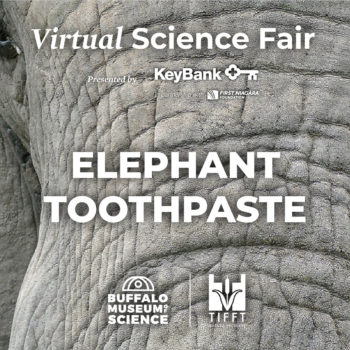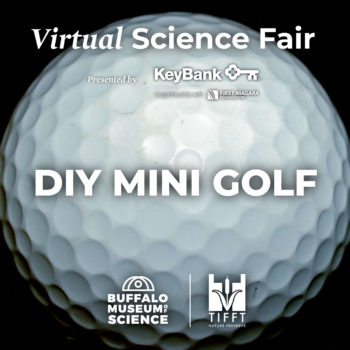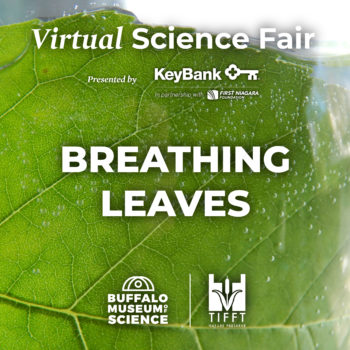Soil Science
Have science fun as a family! Complete activities with parental supervision.
Materials:
- Large bowl or bucket
- Large clear glass or plastic container with a wide mouth and tight-fitting lid (examples: clean sauce or pickle jar, mason jar, or large pretzel container)
- Small shovel
- Soil from outside
- Pencil and paper
- Ruler
- Optional: magnifying glass
Procedure
- Find an outdoor spot where it is safe and permitted to dig.
- Using a small shovel, collect enough soil to fill your container half-way. Be sure to dig DOWN and collect the top, middle, and lower layers of your soil sample site. Place the soil into the bowl or bucket.
- Look for critters—if there are any insects, earthworms or other animals, take them out and put them back in the hole.
- Take a golf ball sized amount of the soil sample and try to roll it into a ball. Is it easy to do or difficult? How does the soil feel? Gritty? Smooth? Something in between?
- Put the soil sample into your container and fill the rest of the container with tap water.
- Screw the lid on TIGHTLY. Shake the jar until all of the soil and water have mixed.
- Place the jar on a level surface where it will not be bumped for the next hour.
- A few times during the hour, observe how the different components of your soil sample are settling without moving the jar. What is settling to the bottom first? What is staying on top?
- After an hour, check to see if layers have formed. If not give it another hour or even leave it overnight.
- Once layers have formed record your observations. Draw a picture of the layers in the jar and describe each layer. What textures do you see? What colors are each layer? What is the difference between particles at the top and particles on the bottom?
- Use a ruler to measure each layer and record this on your picture. Which is the deepest? Which is the thinnest?
- Be sure to take a picture or video to share in the Facebook comments on the Buffalo Museum of Science or Tifft Nature Preserve pages!
What’s it all about?
Soil is a mixture of minerals, water, air, and small organisms. It can be made up of mostly sand, silt, clay, or a combination of these.
When we shake the soil and water, the different particles mix and then settle. Heavier, denser particles such as gravel will settle first to the bottom, then the next heaviest particles all the way up to the lightest least dense such as plant matter.
Try It!
Try selecting another outdoor site to collect soil and make a sedimentation jar. Compare the results of each jar. Identify the different layers, measure, and record. Is the soil the same at different locations?
